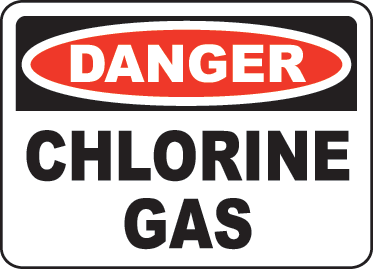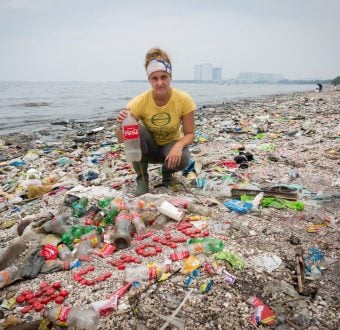A subsidiary of Koch Industries recently leaked about 15 pounds of toxic chlorine dioxide gas from a Florida mill following a 3AM power outage.
Employees of an industrial facility in Perry, Florida described a “big green cloud” of deadly chlorine gas headed toward the town of Perry from a plant operated byBuckeye Technologies. Last year,Buckeye was purchased by Koch Industriessubsidiary Georgia-Pacific for $1.5 billion.
![]() Fortunately, nobody was hurt in Koch’s chemical spill, although employees were evacuated for several hours and the leak lasted for an hour, according to the company responsible. Florida WCTVspoke with employees from the Koch facility:
Fortunately, nobody was hurt in Koch’s chemical spill, although employees were evacuated for several hours and the leak lasted for an hour, according to the company responsible. Florida WCTVspoke with employees from the Koch facility:
“It was an accidental release. The employees that were involved, about 5 to 6 employees, were evacuated immediately and employees responded immediately to stop the release, stop the leak,” said Scott Mixon, Public Affairs Manager for what will soon be re-named the Foley Cellulose Mill.
Mixon says the leak happened near the east gate where the mill washes and purifies pine pulp. The mill estimates the “release” lasted for about an hour.
“It can cause irritation to the eyes,” Mixon said. “It can cause irritation to the throat, and it can cause irritation to the lungs.”
“But as far as you know, none of your employees experienced those symptoms?”
“We had no injuries,” Mixon said.
The leak was contained and Buckeye officials say an all clear was sounded for employees to return to work at 11:08 a.m.
According to WCTV, there was another gas leak at the same Koch facility a week before, on May 22nd.
When Greenpeace contacted the Florida Department of Environmental Protectionon May 30, DEP deferred to Buckeye’s claim that the leak had “absolutely no effect” on local air or water. The Taylor County sherriff’s office had no information to offer when Greenpeace initially called on May 30.
When Greenpeace contacted the Region 4 Environmental Protection Agency, also on May 30, they had not heard about the leak from Buckeye’s Foley Cellulose Mill. The Occupational Health and Safety Administration (OSHA) told WCTV that it is “aware of the incident and will handle it according to our policies.”
This is not Buckeye’s first leak at this particular mill. On August 24, 2005 (before Koch bought Buckeye), the plant leaked 81lbs of chlorine dioxide, far more than the 15lbs leaked at the end of May, 2014. According to public filings,Buckeye stores 66,000 pounds of chlorine dioxide on site.
Here’s aGoogle map of the Buckeye facility, where homes and businesses appear to be within a one mile radius of Buckeye’s recent gas leaks.
Toxic Koch: Lobbying Against Chemical Safety Rules
Chlorine gas is one of many toxic substances that Koch Industries’ companies store on site across the United States. As Greenpeace reported in 2011, filings with the U.S. Environmental Protection Agency show howKoch put millions of people at risk from avoidable chemical disasters in the U.S.
Koch lobbies aggressively against federal safeguards at dangerous chemical plants, despite the lingering threat its facilities pose to U.S. residents.
It’s because of leaks like this that better safeguards–like those Koch companies lobby to block–are needed to protect people from chemical disasters.
Last week a federal inter agency working group released a report to the White House to address chemical plant safety and security. The working group has been tasked by the President to evaluate federal policies and move forward with strong and enforceable safeguards that eliminate the risk of an explosion or a release of toxic fumes. If done correctly, these future actions would have a huge impact on how industry operates and would have a greater impact on the health of workers and communities living near these facilities.
 From Greenpeace’s 2011 Toxic Koch report, a bit more on Georgia-Pacific’s use of chlorine dioxide, which could be replaced with safer alternatives:
From Greenpeace’s 2011 Toxic Koch report, a bit more on Georgia-Pacific’s use of chlorine dioxide, which could be replaced with safer alternatives:
The Georgia-Pacific Corporation, acquired by Koch Industries in 2005, is a producer and distributor of paper products. Georgia Pacific operates nineteen hazardousfacilities. Of these nineteen, three facilities each put more than 100,000 Americans at-risk:
| Georgia Pacific Operation | Number of people at Risk |
| Palatka Operations (Palatka, FL) | 148,315 |
| Consumer Products (Camas, WA) | 400,000 |
| Port Hudson Operations (Zachary, LA) | 520,000 |
Chlorine dioxide can affect people in a variety of ways. In lower workplace exposures the Occupational Safety and Health Administration (OSHA)warnsthat:
Chlorine dioxide is a severe respiratory and eye irritant…. Inhalation can produce coughing, wheezing, respiratory distress, and congestion in the lungs… Irritating effects in humans was intense at concentration levels of 5 ppm. Accidental exposure at 19 ppm of the gas inside a bleach tank resulted in the death of one worker (time of exposure is not specified).
These side effects were observed at only ambient workplace levels. In a catastrophic release of chlorine dioxide, the gas could be more concentrated leading to moresevere reactions. Skin irritation, tissue and/or cellular damage, visual disturbances, the lungs filling with fluid (pulmonary edema), and death are all in the realm of possible reactions.
There are safer chemical processes that can mitigate or prevent catastrophic releases of chlorine dioxide. Paper can be bleached with an oxygen-based process using ozone or hydrogen peroxide (Chemical Security 101, p. 15). These processes can be completedwithout chlorine dioxide, which could eliminate the risk of a catastrophic disaster at these Georgia Pacific facilities.


